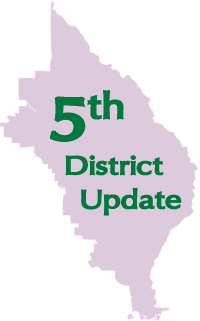 How we spend our money is a direct reflection of our individual priorities and needs.
How we spend our money is a direct reflection of our individual priorities and needs.
That’s true for all of us — younger or older, married or single, with children or without. If we are fortunate to draw income through employment, retirement or other means — whether that income is fixed or fluid — we demonstrate what’s important to us based on what we do with it.
The County of Santa Cruz is no different. Within our total $827 million recommended budget for the upcoming fiscal year, there are countless ways that we demonstrate our collective values by tapping taxpayer dollars from federal, state and local sources to provide basic services, such as public health, road repairs, law enforcement, fire protection, parks and housing, to name just a few.
With your own individual pocketbooks in mind, I know it’s hard not only to wrap your mind around a budget figure that large, but it’s impossible to know all the ways in which those spending choices may affect daily life in our County.
 That’s why I am proud that for the first time, the County is presenting a budget for public review during the month of June that is directly tied to our goals for community improvement, innovation and sustainability as outlined in our Strategic Plan (2018-2024), which was approved by the Board in June 2018. Focus areas include health and safety, attainable housing, reliable transportation, sustainable environment, dynamic economy and operational excellence. Further, we are premiering an inaugural two-year budget designed to align with a two-year operational plan approved in May 2019 that puts our near-term goals into action.
That’s why I am proud that for the first time, the County is presenting a budget for public review during the month of June that is directly tied to our goals for community improvement, innovation and sustainability as outlined in our Strategic Plan (2018-2024), which was approved by the Board in June 2018. Focus areas include health and safety, attainable housing, reliable transportation, sustainable environment, dynamic economy and operational excellence. Further, we are premiering an inaugural two-year budget designed to align with a two-year operational plan approved in May 2019 that puts our near-term goals into action.
Just like our residents, businesses and nonprofits, we are trying to adequately fund our most pressing needs and plan for an often-unpredictable future by determining creative ways to raise or sustain revenues in the face of rising costs.
The expense of doing business — or in the case of local folks, just living life — almost always goes up rather than down, unless we take steps to tighten our belts. And even then, unforeseen circumstances, such as severe winter storms that ravage roads or revenue streams that suddenly go away, can upend even the best financial planning.
The recommended Fiscal Year 2019-2020 budget, which the Board of Supervisors will begin reviewing in detail through public hearings June 17-20, is 5 percent lower in the first year than the 2018-2019 adopted budget. We are projecting another 7 percent reduction in FY 2020-21. But those budgets include all the spending we are mandated to do as the agent of state and federal programs.
Our discretionary budget is much smaller: In the year ahead, it represents about $165 million in county revenue contributions and costs. We anticipate closing a gap of $6 million to $7 million by steadying or reducing costs where we can and maintaining 10% reserves even as our CALPERS costs are expected to increase 75 percent over the next six years.
That reality, faced by cities and counties across California, represents an unbudgeted ongoing cost of about $19 million. And although California’s economy is strong now, any significant downturn will only deepen our challenges.
Luckily, in recent years, taxpayers have said yes to strengthening investments in transportation, libraries, and parks. We are seeing those investments yield results in road repairs, new or refreshed libraries like in Felton and Boulder Creek, and exciting community spaces like the Felton Discovery Park and Leo’s Haven accessibility playground at Chanticleer Park.
It’s important that you know how much of your taxpayer money actually goes toward addressing local needs. It’s less than you might think.
The County receives the full benefit of each dollar paid through licenses, fees, charges for service, lodging taxes and cannabis revenue. In comparison, the County receives only 12 cents on the dollar for sales taxes from the unincorporated area while the State receives the rest. Of property taxes, which amounts to an average of $5,141 per County taxpayer annually, the County receives 13 cents on the dollar compared to 58 cents for schools, 23 cents for other districts, and 5 cents for cities.
The trick is to be smart with the resources you have. I’m grateful we are taking a prudent, strategic approach to letting our values and priorities guide our spending and define how we try to raise revenue to address our goals.
•••
I encourage you to take even a quick look at our interactive budget tool at sccbudget.com, and as always, contact my office at [email protected] or 831-454-2200 if you have questions.

